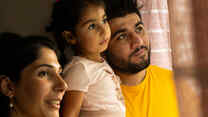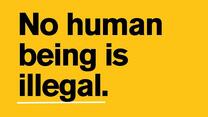People around the world are forced to make the difficult decision to leave their homes every day. By the end of 2022 there were over 36.4 million refugees worldwide. We’re breaking down what it means to be a refugee.
What is the definition of a refugee?
A refugee is someone who has been forced to leave their country in order to escape war and persecution. They are unable to return home until conditions are safe for them again.
Refugees are protected by international law under the 1951 United Nations Refugee Convention, of which the UK is a signatory.
What is the difference between a refugee and an asylum seeker?
An asylum seeker is someone who is seeking international protection from their home country but whose claim is still being processed therefore refugee status has not been determined yet. People can seek asylum in their country of choice.
Asylum seekers must prove to authorities that they meet the criteria to be covered by refugee protections. Not all asylum seekers will be given refugee status.
What does ‘refugee status’ mean?
National governments - for example, the UK government - have the power to decide if a person can be legally classified as a refugee. This process is called Refugee Status Determination.
Due to the Nationality and Borders Act, refugees now receive different types of protection depending on how they arrived in the UK, with penalisation for irregular arrival.
Group 1 refugees come directly to the UK without passing through a ‘safe’ third country. They can receive 5 years' permission to stay.
Group 2 refugees may receive 30 months of protection. They can apply to renew this status. Some asylum seekers who arrive irregularly may also face deportation.
You can find further information on the Right to Remain website here.
Read more about safe routes to the UK here.
Which country hosts the most refugees?
The majority of the world’s refugees - 69% in 2023 - flee to countries neighbouring their country of origin.
As of mid-2023, the largest refugee-hosting countries were Iran and Turkey, each hosting 3.4 million refugees. The majority of refugees in Iran are from Afghanistan as the countries share a border that runs more than 550 miles.
Most refugees living in Turkey are from Afghanistan, Syria, Bangladesh, Pakistan and Somalia. Many of them have been there for years with limited access to work and often separated from their families.
Germany hosts 2.5 million refugees, while Colombia has the fourth-largest refugee population with just under 2.5 million, many of whom are Venezuelans who’ve fled across the border.
Other countries with large refugee populations include Pakistan and Uganda.
Why does somebody become a refugee?
There are many reasons why someone might become a refugee having faced persecution at home. Unfortunately, conflict is one of the biggest causes of displacement. Over the past few years, we’ve seen millions flee countries, including Syria, Afghanistan and Ukraine due to conflict ruining their homes and posing dangers to their lives.
Climate change is driving displacement.
Our teams around the world have seen how climate is a threat multiplier for conflict, hunger and the forced movement of people. Extreme weather events sparked by climate change combined with existing conflicts or other humanitarian emergencies makes life even more difficult for people living in crisis-affected communities. For example, as Afghanistan continues to grapple with decades of conflict and economic turmoil, over a million people remain displaced due to natural disasters.
Without immediate and concerted action, climate change could force over 200 million people worldwide into internal displacement alone by 2050.
Where do refugees go?
The majority of refugees reside in neighbouring countries that border their own. 85% of the world's refugees are hosted in countries in the global south.
Some refugees however make their way to European countries. This can be for many different reasons. Whether it's the fact that they already speak English or to join friends or family members who are already living there.
Related: Refugee facts and statistics
How many refugees are in the UK?
The UK hosts less than 1% of the global refugee population. According to UNHCR statistics, as of November 2022 there were 231,597 refugees in the UK. There were 67,337 asylum applications (relating to 84,425 people) in the year ending December 2023.
Following the Afghanistan crisis in August 2021, the UK government announced they would receive 20,000 refugees from Afghanistan through the Afghan citizens' resettlement scheme. But statistics show for the year ending September 2023, only 234 people were able to arrive on this scheme. In the same period almost 9,000 Afghans were left with no other option but to make the dangerous journey across the Channel to reach safety in the UK.
As the conflict in Ukraine continues, the UK government made various immigration concessions, including allowing Ukrainians to join family in the UK by applying for visas. The government launched a humanitarian sponsorship scheme, which enabled communities in the UK to support refugees from Ukraine - including non-Ukrainian nationals - to live here. As of May 2023, more than 160,000 peoplehave arrived in the UK through these routes.



